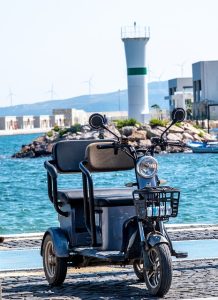What is the Raw Material for Electic Vehicles?

Introduction of “What is the raw material”
“What is the raw material” by itself is a question because the final product consists of multiple parts. Each part is made up of different raw materials.
. For different segments of Electric Vehicles, raw materials will vary. For details about segmentation, please refer to:https://readwrite.in/segmentation/ please read below the details of raw materials for Electric Vehicles.
The raw materials for Electric Vehicles typically used in each segment of an e-mobility project:(e-mobility is also known as usage of electric vehicles)(EVs)
Battery manufacturing especially, consists of:
Lithium: Used in lithium-ion batteries, which are the most common type of batteries used in electric vehicles (EVs). Major lithium-producing countries include Australia, Chile, China, and Argentina.
Cobalt: An essential component in the cathode of lithium-ion batteries. Primary sources are the Democratic Republic of Congo, Australia, and Russia.
Nickel: Used in the cathode of lithium-ion batteries. Key producers are Indonesia, the Philippines, and Russia.
Graphite: Used in the anode of lithium-ion batteries. The main sources are China, Brazil, and Canada.
Aluminium: Used in battery casings and cooling systems.
Copper: Used in wiring and electrical connections.
Steel: Used in battery racks and structural components.
Electric Motor Manufacturing importantly is made up of the following:
Copper: Used in the windings of electric motors. Major copper producers include Chile, Peru, China, and the United States.
Iron: Used in the stator and rotor of electric motors.
Magnets: Typically made from rare earth metals such as neodymium and dysprosium. China is the dominant producer of REEs, used in magnets for electric motors.
Charging Infrastructure/, notably uses:
Copper: Used in charging cables and connectors.
Aluminium: Used in charging station casings and structural components. Major producers include China, Russia, and Canada.
Steel: Used in charging station frames and supports.
Electronic components: Such as circuit boards, semiconductors, and capacitors.
Vehicle Manufacturing consists of raw materials such as:
Steel: Used in the vehicle’s frame, body panels, and chassis.
Aluminium: Used in the vehicle’s body, doors, and wheels.
Plastic: Used in various interior and exterior components.
Glass: Used for windows and windshields.
Copper: Used in wiring, electrical connections, and electric vehicle components.
Lithium: Used in vehicle batteries.
Infrastructure Development is done with items such as:
Concrete: Used in constructing charging stations, parking lots, and roads.
Steel: Used in the infrastructure’s structural elements.
Copper: Used in electrical wiring and connections.
Aluminium: Used in support structures and electrical components.
Please note that the specific raw materials used can vary depending on the type of electric vehicle, battery chemistry, and manufacturing processes employed by different companies.
Lightweight Materials, for example, are:
Aluminium: Primary producers are China, Russia, Canada, and the United Arab Emirates.
Carbon Fiber: The main sources are Japan, the United States, and China.
Magnesium: Major producers include China, Russia, and Brazil.
Solar Panels (used in solar-powered EV charging):
Silicon: China, the United States, and Germany are major silicon producers.
Silver: Primary sources are Mexico, Peru, and China.
Conclusion about “What is the raw material for electric vehicles”
In conclusion, it’s important to note that the availability and sources of the raw materials for electric vehicles may change over time as new deposits are discovered, technologies evolve, and market dynamics shift.
Additionally, experts are putting in effort on specific raw materials in the e-mobility sector :
- to develop alternative materials and
- to improve recycling processes
- For details about e-mobility please refer to:https://readwrite.in/e-mobility/
